Ever heard of the pastel portrait artist Thérèse Schwartze?
I hadn’t until a few years ago when I was shocked to discover that this Dutch artist (1851-1918), this woman artist, had made a great living as a painter. I’m talking millionaire great. Extraordinary!
Born in Amsterdam and raised in Philadelphia, Thérèse Schwartze was renowned as a portraitist who not only painted the Dutch upper classes but also had many commissions from Europe and the United States.
Today, I wanted to take a close look at one of her pastel paintings. (She also worked in oils.)
This painting of Paul Gabriël In the Rijksmuseum is one of the few portraits she did of men. It’s unknown so far why this was so.
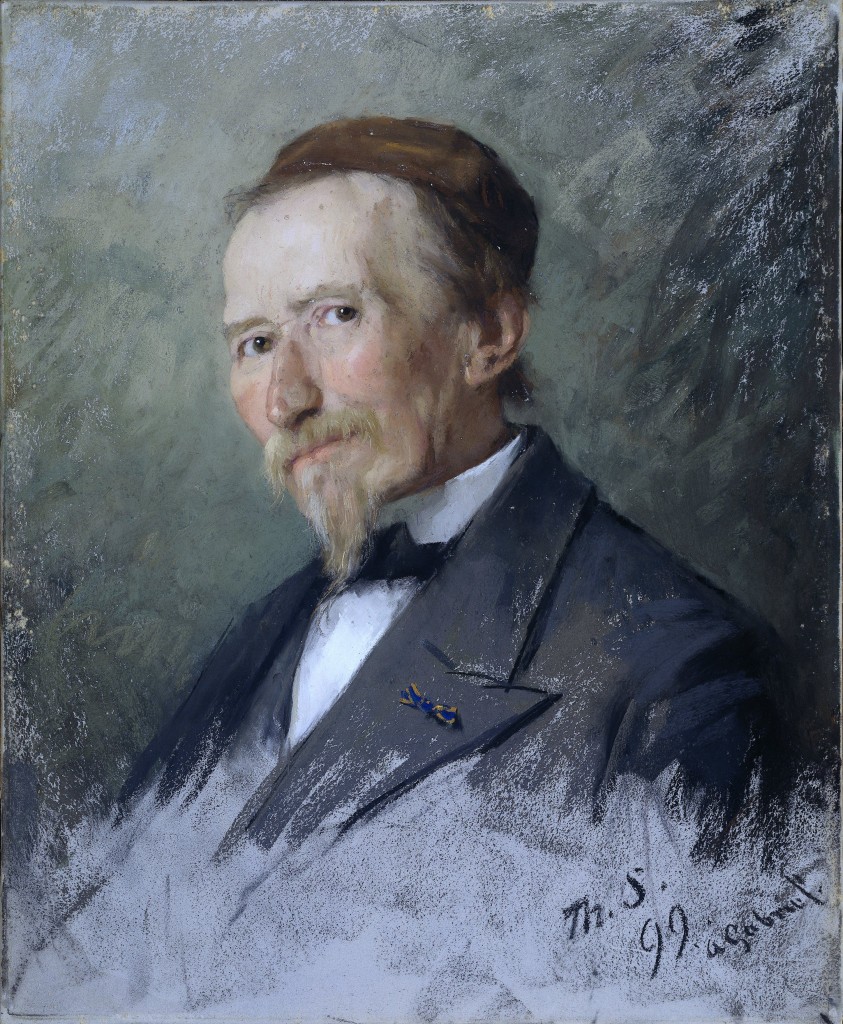
Now let’s have a closer look at this painting by Thérèse Schwartze.
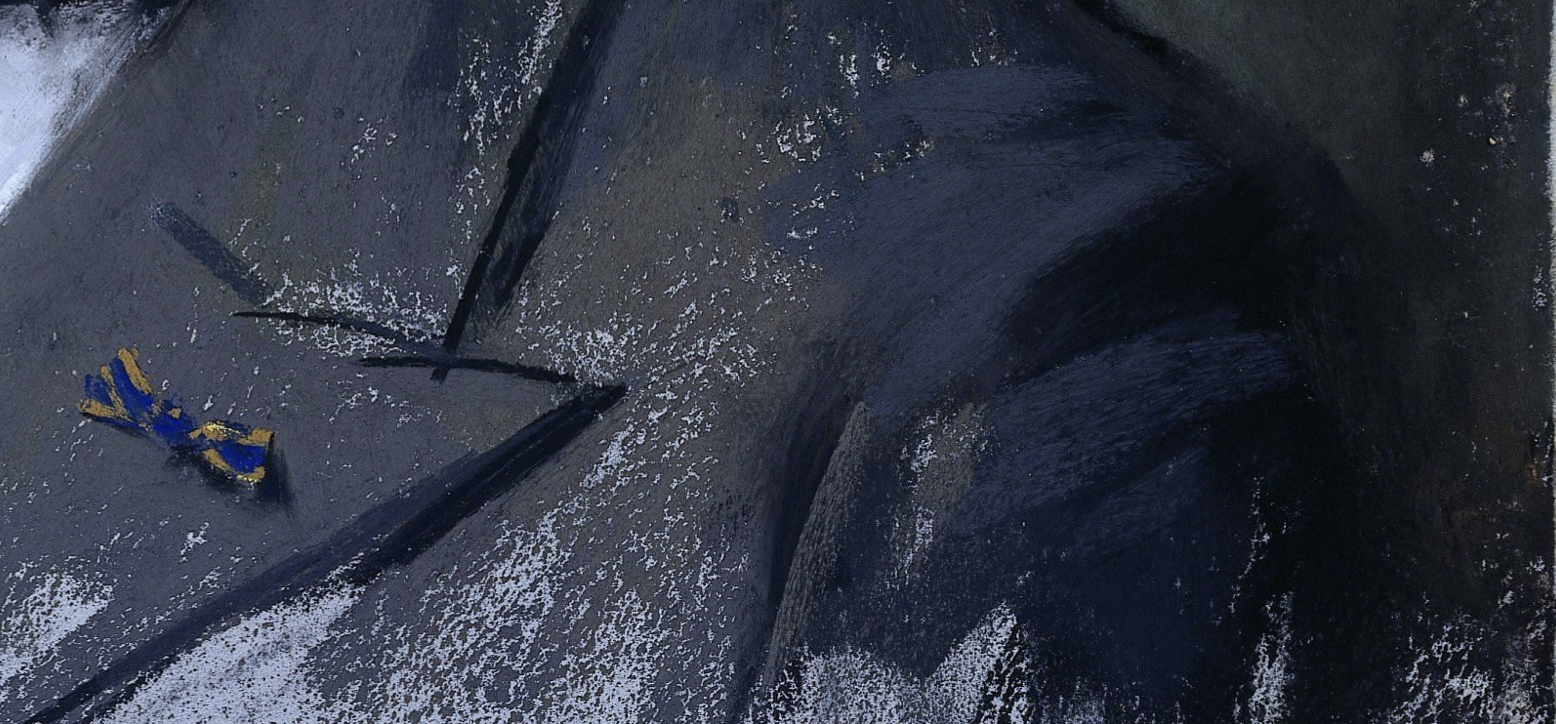
So, the jacket. Look at the subtle use of blues and warm dark greys (similar values/tones) that give the jacket texture and interest. I also love the way Schwartze uses the color of the paper itself to add light to the jacket. She releases the pressure of the pastel to create a lighter coating of pastel as we move to the bottom of the piece. Here, the paper color and lightness take over completely. Notice too the distinct and bold marks she made to indicate the edge of the collar.
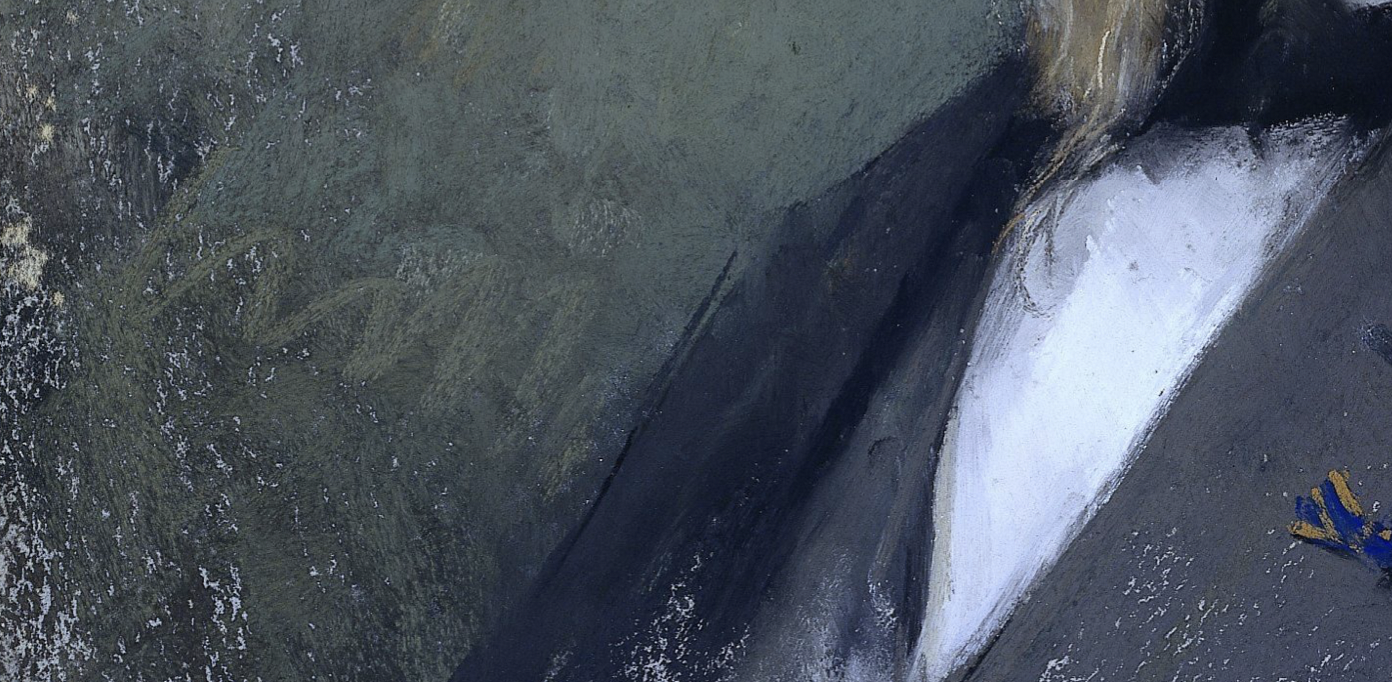
Things to notice in this closeup:
- The linear squiggle in the background (staying in the same value)
- The density of pastel for the white shirt (an opaque equivalent to oil paint)
- The small linear mark at the edge of the sleeve near the shoulder and the way, at that point, there’s a small lost edge
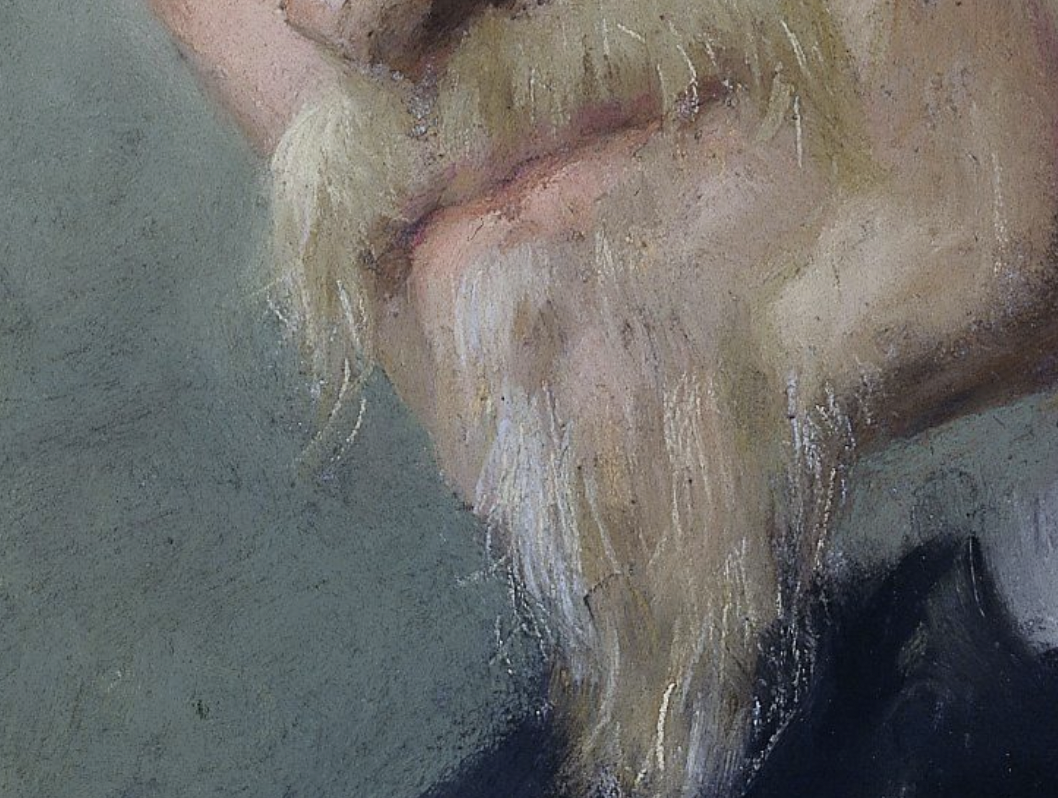
Schwartze applies the pastel in a painterly way to show the facial hair, finishing with some small tiny marks to indicate hairs. Note though how few of them are needed for us to read “beard” and “mustache.”
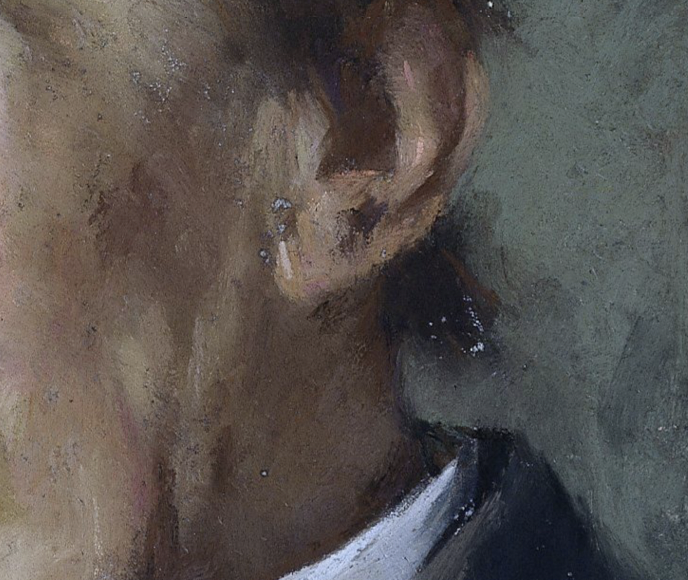
Look at the way the artist almost smudges the hair at the back of the head just above the collar where it melds with the background. And ahhhhhh, that loosely rendered ear. Just enough to read “ear.”
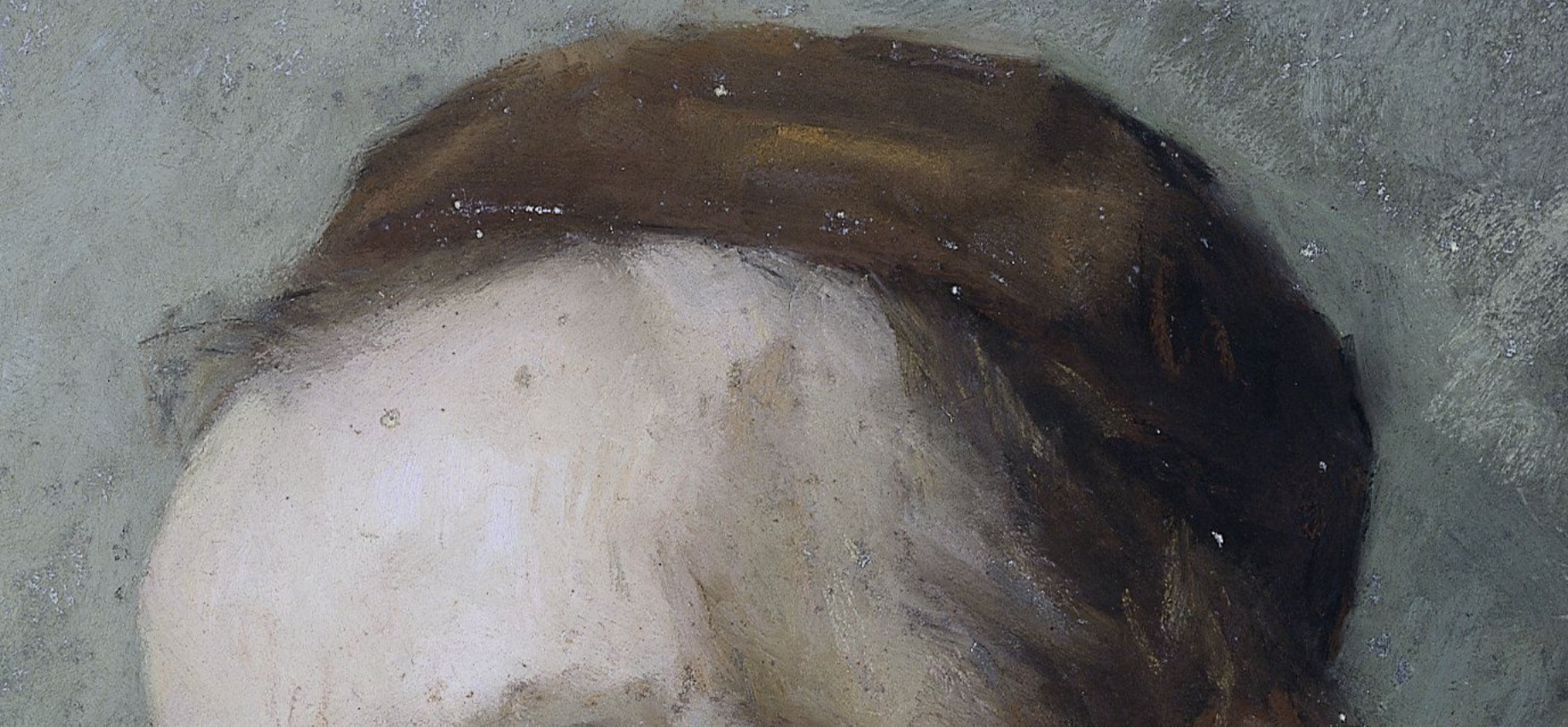
The sitter’s wispy hair blends into his forehead and we know, undoubtedly, it continues under his cap. Observe the subtle change from the skin to the hair on the right side of the face.
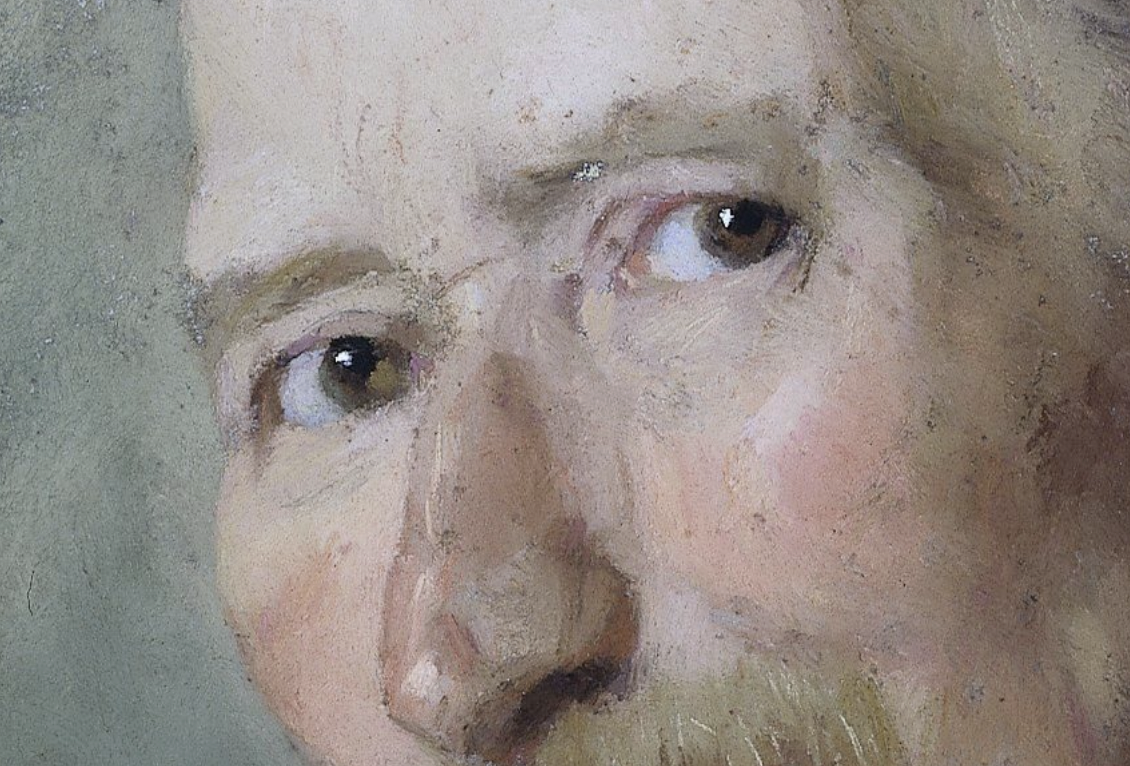
Ahhh the eyes. You can feel the weight of the hooded skin covering the eye. Look at the way the eyeball meets the lower lid – there’s no line dividing them. Instead, the delineation is made by a slight value shift and a definite change in temperature.
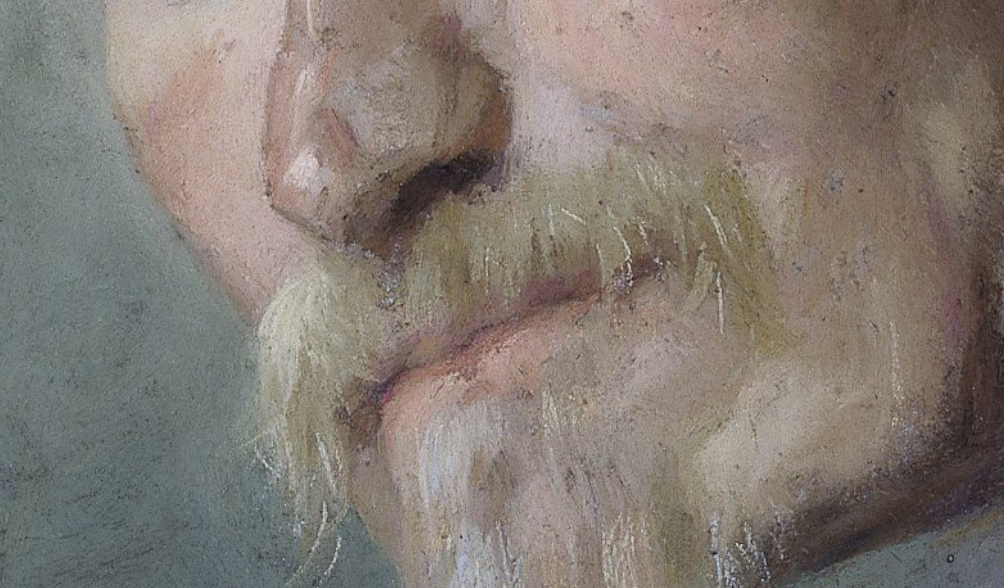
And is that a hint of a smile we see?
There’s a feeling of curiosity and compassion coming through this portrait of a man, a painter himself. According to author Cora Hollema, “The painter Gabriël was an intimate acquaintance of Schwartze’s father and a friend of the family. Schwartze may well have made this portrait as a tribute and a gesture of her warm regard for him. She may also have produced it, especially for an exhibition. After all, Gabriël was a renowned landscape painter, whose likeness was bound to attract attention.”
Join us for Pastel Live and learn from the world’s top & most accomplished pastel painters! Learn about the next one at PastelLive.com now.




Thank you so much for this beautifully written, deeply insightful article on Therese Schwartze. Her work shows such compassion, and the sense of realism is tangible; it has an almost indefinable quality about it.
Warm regards,
Judith Malan
Judith, thank you for your appreciative and expressive response!!
And yes!!